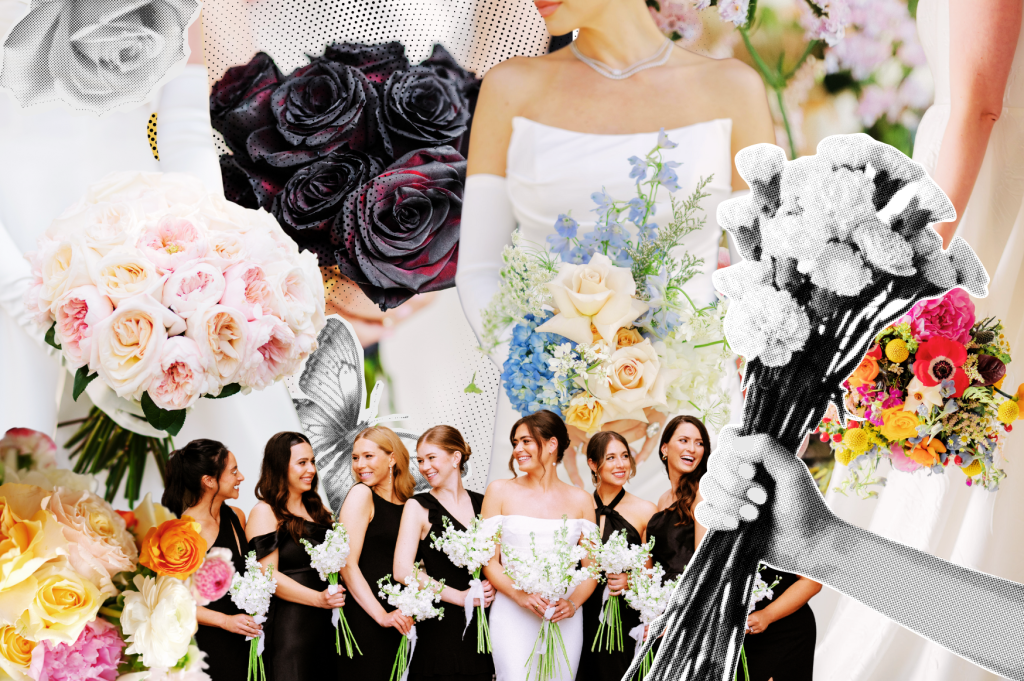Discover The Language of Flowers
Feature collage photos by: Nicodem Creative, Aspen Avenue, Karlie Dru Photography, Madi Ellis Photography, Victoria C Photos, Maura Black Photography
For centuries, flowers have spoken a romantic secret language. Floriography, the practice of using flowers for coded communication, originated in ancient times and peaked in the 1800s. Also known as the “Victorian language of flowers,” this practice allowed people to communicate intimate feelings at a time when social etiquette limited direct expression of emotions.
In Victorian England, long before the advent of text messaging and FaceTime, flowers served as intimate messengers. Numerous floral dictionaries published at the time cracked the codes, detailing the meanings of blooms and enabling discreet communication.
Though times have changed and we can express feelings openly today, incorporating this silent dialogue into your wedding adds a romantic touch. Understanding the symbolism behind different flowers can infuse your wedding day with personal significance. Here’s a guide to the meanings of some popular wedding flowers:
- ANEMONE: Anticipation
- ASTER: Happiness in old age
- AZALEA: Temperance
- BELLS-OF-IRELAND: Good luck
- CALLA LILIES: Magnificent/feminine beauty
- CAMELLIA: Perfect loveliness
- DAFFODIL: Chivalry
- DAHLIA: Dignity
- DAISY: Innocence and beauty
- DELPHINIUM: Levity
- GARDENIA: Secret love
- GERANIUM: Confidence
- HIBISCUS: Delicate beauty
- IRIS: A messenger
- LAVENDER: Confession
- LILAC: Awakening love
- LILY: Purity
- LILY-OF-THE-VALLEY: Renewed happiness
- MAGNOLIA: Love of nature
- PEONY: Bashfulness
- PERIWINKLE: Early friendship
- PRIMROSE: Youth
- RANUNCULUS: Radiant with charm
- ROSE (GENERAL): Love
- ROSE (DAMASK): Blushing beauty
- SUNFLOWER: Lofty thoughts
- TRUMPET FLOWER: Fame
- TULIP: Declaration of love
- VIOLET: Faithfulness
- ZINNIA: Thoughts in absence
*Definitions have been derived from various historical sources. In this instance, we consulted the books “The Language of Flowers” (1865) by Mrs. L Burke and “Cyclopedia of Practical Floriculture” (1884) by Cordelia Harris Turner.




